Menus
- In the heat of power
- Kawasaki Ninja ZX-10R with Euro 4 homologation
- Responds at 5 millisecond intervals
- Simple and easy to read display instrument
- Brakes decelerate immediately, but not too toxic
- Racing kit ZX-10R
- Technical specifications
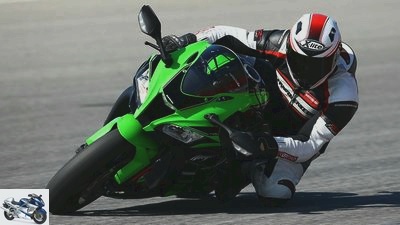
Kawasaki
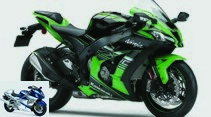
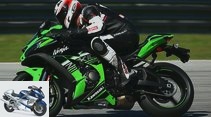
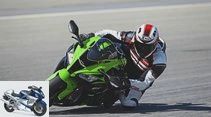
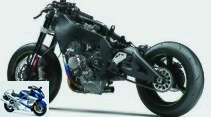
18th photos
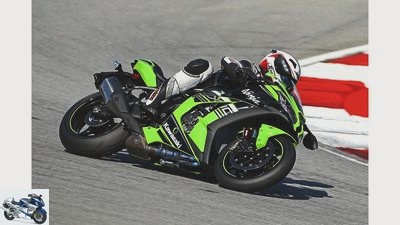
Kawasaki
1/18
Kawasaki Ninja ZX-10R.
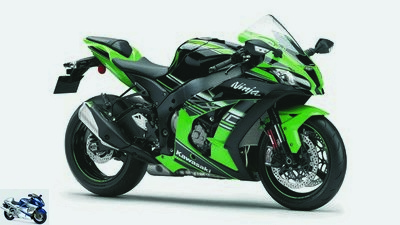
Kawasaki
2/18
Kawasaki Ninja ZX-10R.

Kawasaki
3/18
Kawasaki Ninja ZX-10R.

Kawasaki
4/18
Kawasaki Ninja ZX-10R.
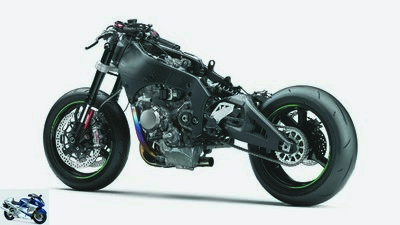
Kawasaki
5/18
…The closed profiles make work on the engine more difficult, but they contribute a lot to the chassis quality of the Kawa.
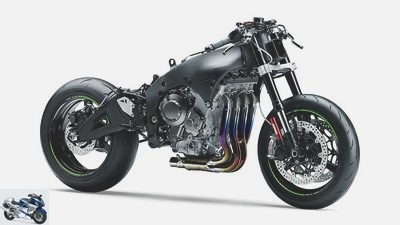
Kawasaki
6/18
This shows how immensely stable the front part of the frame is…

Kawasaki
7/18
A racing kit of today: apart from another gearbox and harder fork springs, it contains no mechanical parts.
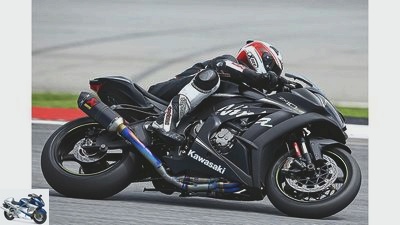
Kawasaki
8/18
The ZX-10R with kit electronics and exhaust.
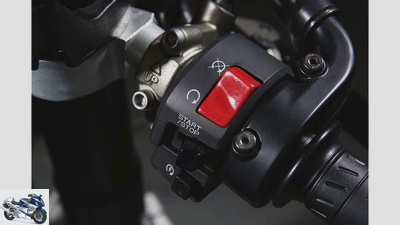
Kawasaki
9/18
Kawasaki Ninja ZX-10R.
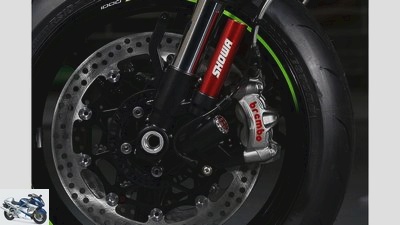
Kawasaki
10/18
Kawasaki Ninja ZX-10R.
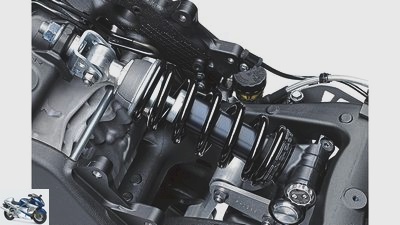
Kawasaki
11/18
Despite the twin tube technology and reservoir, the shock absorber is very compact.

Kawasaki
12/18
Beautiful straight and wide canals create ideal conditions for a lot of full throttle. The throttle valves are operated by an electric motor.

Kawasaki
13/18
When accelerating fully, the light strip on the rev counter flashes very prominently; reading the other displays requires more leisure.
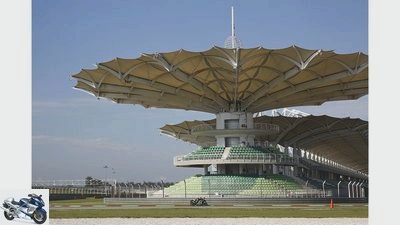
Kawasaki
14/18
Kawasaki Ninja ZX-10R at the Sepang International Circuit in Malaysia.
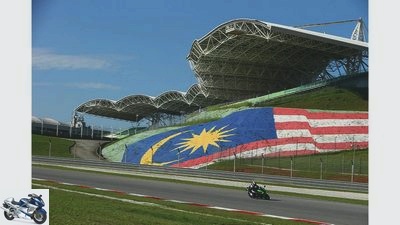
Kawasaki
15/18
Kawasaki Ninja ZX-10R at the Sepang International Circuit in Malaysia.
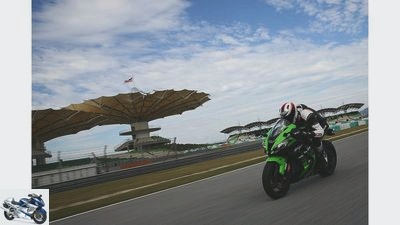
Kawasaki
16/18
The new four-cylinder catapults itself through the aisles on the two long straights of the Sepang International Circuit.
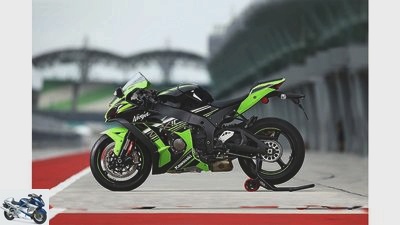
Kawasaki
17/18
The differences to the “old” ZX-10R only come to light on closer inspection. The cladding should offer better wind protection. We cannot know whether it is really better. That he is good, on the other hand, is.
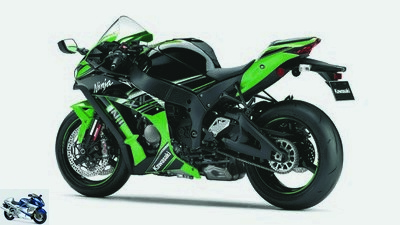
Kawasaki
18/18
Kawasaki Ninja ZX-10R.
New Kawasaki Ninja ZX-10R (2016) in the driving report
In the heat of power
The new Kawasaki Ninja ZX-10R was presented on the Sepang Grand Prix circuit in Malaysia: high summer with temperatures of over 40 degrees. The test drives were also a hot thing for other reasons.
Everything becomes easy in moments of maximum concentration. The screaming of the four-cylinder Kawasaki Ninja ZX-10R tingles on the skin, the distance narrows to a braking point, most of the displays of the instrument in front of you become meaningless. The only thing that counts is the light strip that went into the red area seconds before and now flashes urgently. Next gear, red flashing again, next gear and another and another.
Buy complete article

New Kawasaki Ninja ZX-10R (2016) in the driving report
In the heat of power
Ninja ZX-10R is the same as the previous model, but project manager Yoshimoto Matsuda says with a wink that an average of around four horsepower was also gained there.
Kawasaki Ninja ZX-10R with Euro 4 homologation
Perhaps, but the revised engine gained the most in the middle from around 6000 rpm. Even underneath it, it appears subjectively stronger than the version built since 2011, of course without reaching the power of the BMW drive. This plays a minor role on the racetrack; There is only one uphill left bend in Sepang where you want a little more torque in the acceleration zone. For a few moments before the pulling force begins. The initial reluctance of the Kawasaki Ninja ZX-10R in this passage also has to do with the Euro 4 homologation and the work of the traction control, as shown by a ride on a kit motorcycle, which was much more energetic here. More on this on the article page "Racing kit ZX-10R".
The first laps on an unknown racetrack are seldom smooth and harmonious, they are an annoying phase of acclimatization that everyone wants to get over with quickly. However, this phase is important for assessing a motorcycle because it clearly shows how well it supports its error-prone driver in learning. The Kawasaki ZX-10R looks very pleasing. It does not require an extreme sitting posture, the ergonomics also allow deep hanging-off, and the Kawa is perfectly balanced. In the tight double hook at the end of the home straight with the steeply sloping left bend, she guides the front wheel safely, on the other hand, a few seconds later, the lean change succeeds at full acceleration without any special effort. In other words, in a situation in which the machine becomes rather unwieldy with full rear wheel load. One particularly appreciates this kindness with the prevailing temperatures.
Subscribe to MOTORRAD videos on Youtube
Responds at 5 millisecond intervals
The braking stability of the Kawasaki Ninja ZX-10R also deserves a lot of praise. In the long deceleration phases at the end of the two straights, the anti-hopping clutch works in an exemplary manner in conjunction with the drag torque control. Even when downshifting and braking in an inclined position at the same time, as is necessary before the right bend at the beginning of the back straight, you can simply re-engage the clutch without the rear wheel slipping.
The Kawasaki Ninja ZX-10R is not quite as courteous when it comes to load changes at the apex of the bend. Although the throttle valves do not feel as stuck to the front after longer shifting phases as in the previous model, the new one also allows for slight response delays. Which, curiously, usually leads to hard load changes, because then you instinctively pull the gas a little too far. As the driver gets used to the track conditions, the work of the driver on the throttle is refined, and then load changes are no longer an issue. And here, too, the control unit of the racing kit brings an improvement, the engine responds noticeably faster. Anyway, a test has to clarify how the super athlete behaves on winding country roads.
Because temperatures of over 40 degrees and engine outputs of 200 hp require special tires on the racetrack, relatively hard Bridgestone slicks were ridden from the second turn with the ABS switched off. It was therefore not possible to determine how well the system and the integrated Motorcycle Stability Control (MSC) from Bosch work. Instead, there was a good portion of grip on the front and rear wheels, so that the traction control didn’t have much to do either. In the long right-hand bend at the beginning of the lap, which is driven through with full acceleration, you could feel how she was pulling back the throttle valve opening a little, probably also in the uphill-left bend already mentioned. But she always worked so smoothly that it was hardly noticeable. An indication of how precisely the algorithms are now being adapted to the relevant driving situations. As far as the information material, i.e. the measured values supplied by the sensors, is concerned, the new ZX-10R not only detects wheel and engine speeds, throttle valve angle and gear steps like its predecessor. It has the latest sensor box from Bosch, so it also knows very well about inclination, possible drift approaches, beginning wheelies and stoppies and reacts at intervals of five milliseconds.
Simple and easy to read display instrument
Chief developer Matsuda even spoke of the fact that his new software is in the transition from the reactive to the so-called predictive system, i.e. it can react with foresight and therefore regulate closer to the limit. Hence the new sportswoman’s slogan: “Get Closer”. That is, closer to the limit. “The tires constantly give us information about their condition; that creates the high quality of the control, ”says Matsuda. However, he does not want to reveal how he and his colleagues make the tires speak. That sounds mysterious and exciting and almost calls for a systematic test. For now, it must be sufficient to state that there was no need to change the traction control in any phase of the driving day.
In contrast to other manufacturers such as Ducati or Yamaha, Kawasaki has also built a simple, albeit easy-to-read display instrument into the new generation of the Kawasaki Ninja ZX-10R. The product planners preferred to invest the money saved with this detail in high-quality spring elements. Both the fork and the shock absorber are built according to the principles of twin tube technology, which was invented by Ohlins and further developed by Showa for the Kawasaki and consequently for large-scale production. This development mainly affects the double-walled expansion tank. According to a Showa technician, at extremely high pressures it releases oil from the actually closed damper system into the space between the walls, thus reducing the stress on the seals and thus extending their service life. However, this detail has nothing to do with the actual twin tube technology. This is so called because a closed damper oil circuit is created in an inner and an outer pipe (not identical to the stand pipe and sliding pipe). This should result in a uniform oil flow without cavitation (formation of cavities in the oil) or air bubble formation and thus constant damping.
So much for the theory. In practice, the spring elements were completely satisfactory. Few testers made adjustments to the setting, and when they did, only minor adjustments. It was noticeable that just a few clicks back or forth caused a noticeable change. As for the work of the suspension elements while driving, it was noticeable that nothing negative was noticed. Problem areas on the track such as an undulating braking zone or a few waves in a fast left-right combination could be registered. But no overstrain reactions, no pumping when accelerating, no buckling when changing lean angles under load, no bottoming out when braking. All pretty good, also considering the heat. That leaves the small reservation that Sepang’s course is generally not very wavy. To clarify how the Showa suspension elements of the Kawasaki Ninja ZX-10R cope with coarser asphalt fields remains to be tested once more.
Brakes decelerate immediately, but not too toxic
The heat has already been mentioned several times, and the subject once again comes to the fore when it comes to the brakes. Kawasaki has invested a lot of money in this area as well and is installing Brembo monoblocks of the M 50 type in combination with 330 mm discs with a thickness of 5.5 millimeters. Anyone who knows Sepang from the GP TV broadcasts knows that the two long straights run almost parallel there, only separated by a long bend. There it is accelerated twice in quick succession to fifth, sometimes sixth gear, and then braked again until you need first gear. It doesn’t take more to slaughter a brake or to prove its stability. The Brembo system of the Kawasaki Ninja ZX-10R was stable, even in the scorching heat. It is also well-coordinated in terms of its response behavior, immediately building up delay without being too toxic.
When the MOTORRAD tester got used to the motorcycle, tires and track in the afternoon, he dared to take a quick look at the temperature display towards the end of the home straight: At maximum load and speed, the source of power was still working at 98 degrees cooling water temperature. And that was pretty cool given the circumstances.
Racing kit ZX-10R
Not all kit parts were installed, only the control unit and an Akrapovic racing exhaust system. The mirrors were removed and the stern raised a little. The difference to the series is still striking, thanks to the blipper function of the kit control unit, which allows downshifting without the clutch. In addition, around ten horsepower more catapults the Kawasaki ZX-10R even more explosively over almost the entire range.
The load changes were easier to control than with the production motorcycle. With the rear raised, the Kawasaki Ninja ZX-10R was easier to turn and kept a tight line when accelerating. However, the machine reacted ticklishly to driving errors such as taking off the accelerator in an inclined position due to optimistic pace, with slight front wheel chattering.
Technical specifications
Related articles
-
Kawasaki Ninja ZX-10R – old versus new compared
fact 24 photos www.factstudio.de 1/24 Kawasaki ZX-10R: old versus new. www.factstudio.de 2/24 Kawasaki ZX-10R 2016: Brembo instead of Tokico, “balance…
-
Kawasaki Versys 1000 driving report
Wright Driving report: Kawasaki Versys 1000 (with video) Kawasaki’s all-rounder now with a large four-cylinder No half measures: For the Versys there is…
-
First driving report of the Kawasaki GPZ 900 R (MOTORRAD 1-1984)
archive 26th photos archive 1/26 The formula for the Kawasaki superbike of the 1980s, the GP Z 900 R, was light, strong and fast. archive 2/26 According…
-
Kawasaki Z 650 in the driving report
Kawasaki 9 photos Kawasaki 1/9 Photo gallery: Kawasaki Z 650 in the driving report. Kawasaki 2/9 The diet worked: Compared to the ER-6n, the Z 650 has…
-
Driving report Kawasaki ZX-7R Pneumatic hammer Kawaski’s ZXR 750 already had a lot of smoke on the rear wheel, now it gets even better. Inflated over two…
-
Driving report new Kawasaki cruiser
Driving report new Kawasaki cruiser Detente policy Humming along on low stalls with outstretched limbs and looking good doing it – the Kawasaki choppers…
-
Kawasaki Ninja H2R in the PS driving report
Kawasaki 31 photos Kawasaki 1/31 310 PS is an announcement. But how does it feel?? Kawasaki 2/31 The new Kayaba fork is fully adjustable. Kawasaki 3/31…
-
Kawasaki Ninja ZX-10R after-test the brake
PHOTO-BK.COM 34 photos Kawasaki 1/34 Kawasaki ZX-10R (2016). Kawasaki 2/34 Kawasaki ZX-10R (2016). Kawasaki 3/34 Kawasaki ZX-10R (2016). Kawasaki 4/34…
-
Kawasaki Ninja ZX-10R in the PS driving report
Kawasaki 34 photos Kawasaki 1/34 Kawasaki ZX-10R (2016). Kawasaki 2/34 Kawasaki ZX-10R (2016). Kawasaki 3/34 Kawasaki ZX-10R (2016). Kawasaki 4/34…
-
Kawasaki Z 1000 SX in the driving report
Photo: Kawasaki 11 photos Kawasaki 1/11 The LED headlights are part of the new front fairing. They should shine brighter and wider at the same time….